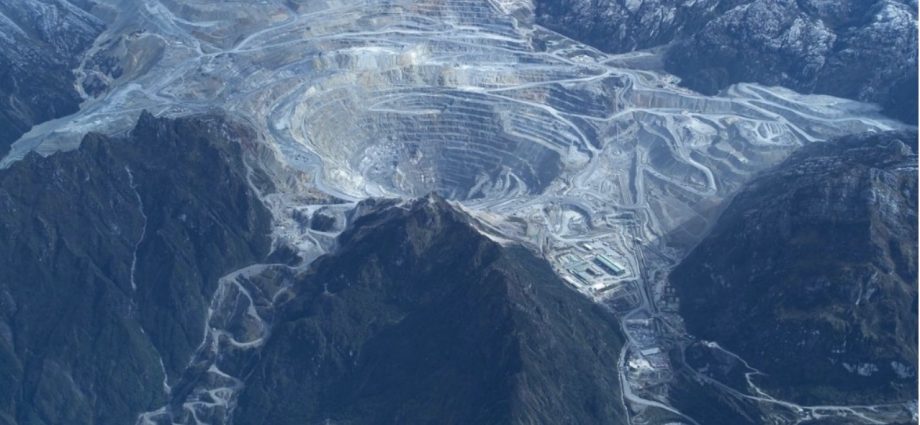The Indonesian Government’s decision to carve up the sprawling province of Papua into four has been widely seen by its detractors as a strategic move to divide and conquer the rebellious indigenous population living mostly along the central mountain chain.
But the leading proponent of the move, President Joko Widodo, who has probably paid more attention to Papua than any previous leader, has always insisted it is aimed at speeding up development, delivering better public services to a vast region where poverty is commonplace.
Despite a last-minute intervention by the Papuan People’s Council (MRP), which threatened widespread demonstrations, the three new provinces – South Papua, Central Papua and Highland Papua – were finally declared on June 30.
MRP chairman Timotius Murib claimed the move was made without proper consultation and would bring more non-indigenous Papuans into local government posts, already a festering sore point among highland community leaders.
The three new provinces have 20 districts in total – four of them in South Papua, where Merauke is the administrative center, and eight each in Central Papua and Highland Papua. The rump Papua province retains nine districts spread out along the northern coast.
The fifth province of Indonesian Papua is the pre-existing West Papua, which remains territorially intact. It contains 1.1 million people and draws economic benefits from British petroleum company BP’s Tangguh liquefied natural gas (LNG) facility in the so-called Bird’s Head region.
Controversial changes to Papua’s 2001 Special Autonomy Law last year cleared the way for the recent division, which appears to cut across the seven tribal Papuan areas that Widodo formally recognized in a 2020 presidential instruction.
At 323,370 square kilometers, Papua province was by far Indonesia’s largest, roughly the size of Norway and with a populace of barely 4.3 million. About half those people are migrants from other islands who have settled mostly in lowland areas.
According to the Bureau of Statistics, the pre-division Papua province’s income last year was 14.7 trillion rupiah, or US$991.5 million, placing it fifth behind Jakarta (Rp72.18 trillion), West Java (Rp41.47 trillion), East Java (Rp31.2 trillion) and Central Java (Rp26.7 trillion).
Revenues are boosted by the presence of Freeport Indonesia’s Grasberg copper and gold mine in Central Papua, a new province stretching from the city of Nabire 200 kms across the Central Highlands to Freeport’s logistics center of Timika (pop: 142,000) on the south coast.

Although the best estimates suggest Freeport’s contribution may be as high as Rp12-13 trillion, there appears to be little to show for it – or for the $$8 billion the province has received in additional special autonomy allocations from the central government since 2002.
Critics blame that on corruption and the result of a concentration of power in the hands of bureaucrats and politicians in Jayapura, the capital and largest city (pop:363,000) located in the far northeast corner of the province bordering Papua New Guinea.
As a land bridge linking the north and south coasts, Central Papua stands to be the economic engine of the region, home not only to Freeport but also to the promising Wabu gold deposit and a long-planned hydro-electric project on the Urumuka River flowing out of Lake Enaratoli.
Construction workers still have to finish a 23km stretch of the road linking Timika and the new province capital of Nabire (pop: 170,000), sitting on the 4,325km Trans-Papua Highway connecting Sorong in the west to Merauke in the southeast.
Another of Widodo’s pet infrastructure projects, which will open up the highlands for the first time, the final 183 kms of the pioneering highway are expected to be completed by 2024, although not all of it will have been paved by then.
Why the government chose Nabire as the capital has been the subject of conjecture. In any case the choice angered local Amungme and Kamoro tribal leaders. Freeport reportedly lobbied against the tribals’ choice, Timika, worried it would have to deal with the daily demands of a more powerful local government.
There were more compelling political reasons as well, mostly stemming from the past dominance of ailing provincial governor Lukas Enembe, 55, a loyalist of ex-president and Democrat Party leader Susilo Bambang Yudhoyono whose term ends later this year.
Enembe, the first highlander elected to the post, shunned Widodo’s early visits to Papua, but appears to have been brought into line in 2018 by corruption allegations involving Papuan student scholarships, in addition to charges that he interfered in district elections.
Analysts say the ruling Indonesian Democrat Party for Struggle (PDI-P) and the second-ranked Golkar Party pushed hard for Nabire as part of an overall effort to end the Democrat Party’s hold on the province ahead of the 2024 legislative elections.
Breaking up the province into three power centers will have the effect of diluting the domination of Enembe’s majority Dani tribe and weakening the authority of Timika-based Mimika district chief Eltinus Omaleng, who steps down in late 2023.
An Amungme, Omaleng has his eyes on the governorship of Central Papua, but political sources say Jakarta favors former Papua police chief Paulus Waterpauw, 58, now apparently learning the ropes as temporary governor of West Papua.
The trusted 58-year-old intelligence officer served as provincial police commander from 2014 to 2015, then was brought back in 2019-2021 to deal with the fallout from riots that engulfed the province after a racial incident in the East Java city of Surabaya.
A hardline Golkar loyalist, Waterpauw is a Christian member of the small Kamoro tribe from West Papua’s Fak-Fak district, more than half of whose inhabitants are Muslim. That’s unusual for Indonesian Papua. About 62% of the West Papua population is Christian and the figure in pre-division Papua province was 70%.

